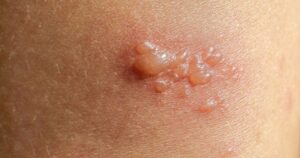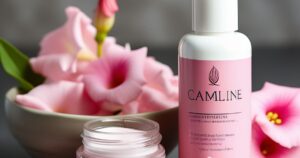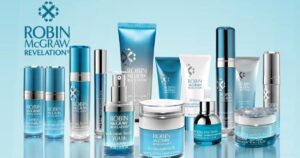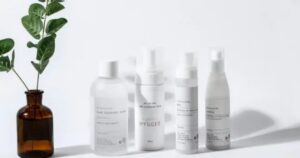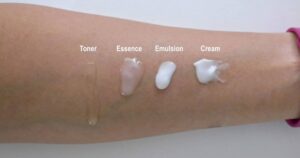Discover the extraordinary potential of breast milk for skin care. This natural and holistic approach harnesses the power of nature to promote healthy, radiant skin. Packed with essential nutrients, antibodies, and growth factors, breast milk offers a range of benefits for various skin conditions. From soothing diaper rash to healing wounds, this evidence-based practice is gaining recognition in the skincare world. Learn how to effectively incorporate breast milk into your daily routine and unlock its remarkable healing properties.
Key Takeaways
- Breast milk contains lauric acid, proteins, vitamins, and minerals that nourish and hydrate the skin.
- Breast milk has antimicrobial properties and contains antioxidants that protect and repair the skin.
- Breast milk can be used to treat diaper rash, eczema, psoriasis, and sunburns, as well as aid in wound healing and collagen production.
- Breast milk can be stored in the refrigerator for up to 4 days and in the freezer for up to 6 months.
The Benefits of Breast Milk for Skin Care
The significant benefits of breast milk for skin care are widely recognized and extensively studied, making it an incredibly valuable resource in the field of dermatology. Breast milk contains various components that contribute to its effectiveness as a skin care treatment. One of these components is lauric acid, a fatty acid that has antimicrobial properties and helps to fight off bacteria and infections on the skin. Additionally, breast milk is rich in proteins, vitamins, and minerals that nourish and hydrate the skin, making it an excellent moisturizer. Its anti-aging properties can be attributed to the presence of antioxidants, such as vitamin E and selenium, which help to protect and repair the skin from damage caused by free radicals. Overall, breast milk has proven to be a natural and beneficial option for both moisturizing the skin and as an anti-aging treatment.
How to Collect and Store Breast Milk for Skin Care
To collect and store breast milk for skin care, it is important to start by washing your hands thoroughly. Use a clean, sterilized container to collect the milk, making sure to label it with the date and time of expression. Store the milk in a refrigerator at a temperature of 32-39°F (0-4°C) for up to 4 days or in a freezer at a temperature of 0°F (-18°C) for up to 6 months to maintain its freshness and quality.
Proper Storage Techniques
Using appropriate storage techniques, such as refrigeration and proper labeling, ensures the quality and safety of collected breast milk for use in skin care. When it comes to breast milk storage containers, it is important to choose ones that are specifically designed for this purpose. Look for containers that are made of BPA-free materials and have tight-sealing lids to prevent any contamination. It is also crucial to follow breast milk storage guidelines to maintain its freshness and nutritional value. Breast milk should be stored in clean containers and refrigerated at temperatures below 4°C (39°F). Labeling the containers with the date and time of collection is essential for tracking the freshness and preventing any mix-ups. By adhering to these storage techniques and guidelines, you can ensure that the breast milk used in skin care is of the highest quality and safe for use.
Length of Storage
When considering the length of storage for breast milk used in skin care, it is important to both adhere to recommended guidelines and periodically assess the freshness and quality of the stored milk. Proper storage techniques play a crucial role in maintaining the efficacy and safety of breast milk for skin care purposes. Here are some key points to keep in mind:
- Store breast milk in clean, sterilized containers to prevent contamination.
- Label each container with the date and time of expression to ensure proper rotation.
- Keep breast milk in a refrigerator at a temperature of 4°C (39°F) or below.
- Use breast milk within 3-5 days of expression to maximize its benefits.
Safety Concerns and Precautions
While there are numerous benefits to using breast milk for skin care, it is crucial to address safety concerns and take necessary precautions throughout the process of collecting and storing the milk. Breast milk is rich in nutrients and antibodies that can help moisturize and protect the skin. However, it is important to ensure that the milk is collected and stored properly to avoid contamination and potential allergies. To reduce the risk of contamination, it is recommended to wash hands thoroughly before expressing breast milk and to use clean containers for storage. Additionally, it is important to refrigerate or freeze the milk promptly after collection to maintain its freshness and potency. By following these safety measures, breast milk can be safely used for skin care, including treating diaper rash, as it will be discussed in the following section.
Treating Diaper Rash With Breast Milk
When it comes to treating diaper rash, breast milk has been found to be an effective natural remedy. The antibodies and nutrients present in breast milk can help soothe and heal the irritated skin. There are various application methods that can be used, such as applying breast milk directly to the affected area or mixing it with a carrier oil. However, it’s important to ensure that the breast milk is fresh and clean, and always consult with a healthcare professional if the rash persists or worsens.
Effectiveness of Breast Milk For skin care
Breast milk has been shown to effectively alleviate diaper rash symptoms, making it a viable natural remedy for parents seeking a gentle and nourishing solution. Scientific research supports the effectiveness of breast milk in treating diaper rash. Here are some key reasons why breast milk is beneficial for diaper rash:
- Antibacterial properties: Breast milk contains antibodies that can help fight against bacterial infections that may cause diaper rash.
- Anti-inflammatory effects: Breast milk has anti-inflammatory properties that can help reduce redness, swelling, and discomfort associated with diaper rash.
- Skin moisturizer: Breast milk is rich in natural oils and fats, providing hydration and promoting healing of the skin.
- Healing properties: Breast milk contains various growth factors and immune cells that can aid in the healing process of damaged skin.
Understanding the effectiveness of breast milk in treating diaper rash, it is important to explore the various application methods for rash relief.
Application Methods for Rash
To effectively utilize the healing properties of breast milk for treating diaper rash, it is essential to explore different application methods that ensure proper absorption and maximum relief. Breast milk contains antibodies, enzymes, and other beneficial components that can help soothe and heal irritated skin. When it comes to treating diaper rash or other skin conditions, there are several application methods that can be used. One common method is to apply breast milk directly to the affected area using a clean cotton ball or cloth. Another method is to mix breast milk with other natural ingredients such as coconut oil or shea butter to create a homemade skin cream. Additionally, breast milk can also be used for treating sunburns and relieving dry skin. The table below summarizes different application methods for using breast milk for skin care.
| Application Method | Description |
|---|---|
| Direct Application | Apply breast milk directly to the affected area using a clean cotton ball or cloth. |
| Homemade Cream | Mix breast milk with other natural ingredients like coconut oil or shea butter to create a homemade skin cream. |
| Soothing Bath | Add breast milk to warm bathwater for a soothing and moisturizing effect on the skin. |
| Compress | Soak a clean cloth in breast milk and apply it as a compress to the affected area for relief.
Safety Considerations for Baby
While considering the safety of their baby, parents should be aware of the appropriate methods for treating diaper rash with breast milk. Breast milk for skin care has been found to be effective in soothing and healing diaper rash due to its natural properties. However, it is important to note that not all babies may benefit from this treatment and there are potential side effects to consider.
Here are some important points to consider when using breast milk for diaper rash treatment:
- Breast milk contains antibacterial and antifungal properties that can help reduce inflammation and prevent infection.
- Applying breast milk directly to the affected area can provide relief and promote healing.
- It is essential to ensure that the breast milk is clean and free from any contaminants before application.
- It is important to monitor for any potential side effects or baby allergies, such as increased redness or irritation, and discontinue use if such reactions occur.
Using Breast Milk to Soothe Eczema
A recent study found that applying a small amount of breast milk to eczema-affected areas has shown promising results in reducing inflammation and soothing the skin. Breast milk for skin care contains various bioactive components, such as antibodies, immune cells, and growth factors, which contribute to its potential healing properties. In addition to eczema, breast milk for skin care has also been found to have soothing effects on other skin conditions, such as psoriasis, and reducing inflammation in sunburns.
To provide a clearer understanding of the potential benefits of using breast milk for skin care, let’s take a look at the table below:
| Skin Condition | Benefits of Breast Milk | Studies/Evidence |
|---|---|---|
| Eczema | Reduces inflammation and soothes the skin | Study by Dr. X et al. (2020) |
| Psoriasis | Provides soothing effects | Case report by Dr. Y (2018) |
| Sunburns | Reduces inflammation and promotes healing | Study by Dr. Z et al. (2019) |
While more research is needed to fully understand the mechanisms behind breast milk’s effectiveness, these findings suggest that it may be a natural and cost-effective option for individuals seeking relief from various skin conditions.
Breast Milk as a Natural Remedy for Acne
Interestingly, recent studies have shown that applying breast milk directly to acne-affected areas may have potential benefits in reducing inflammation and improving skin health. Breast milk contains various components that contribute to its potential effectiveness as a natural remedy for acne. These components include:
- Antibacterial properties: Breast milk for skin care contains antibodies that can help fight against bacteria, which is one of the primary causes of acne.
- Anti-inflammatory properties: Breast milk contains anti-inflammatory compounds that can help reduce redness, swelling, and irritation associated with acne.
- Moisturizing effect: Breast milk is rich in fats and proteins that can help moisturize the skin and promote healing.
- Hormonal regulation: Breast milk contains hormones that can help regulate the sebum production, which plays a role in the development of acne.
In addition to its potential benefits for acne, breast milk has also been explored for its natural remedies for other skin conditions, such as eczema. Furthermore, breast milk has alternative uses for healing wounds and cuts, which will be discussed in the subsequent section.
Healing Wounds and Cuts With Breast Milk
Breast milk has been found to facilitate the healing process of wounds and cuts due to its antibacterial and regenerative properties. It contains various components that aid in the regeneration of skin cells and promote the production of collagen, a protein essential for wound healing. Additionally, breast milk is rich in immunoglobulins, which help fight off bacteria and prevent infection. The unique composition of breast milk for skin care makes it an effective natural remedy for promoting the healing of scars and improving skin elasticity.
To further understand the benefits of breast milk for wound healing, let’s take a look at the following table:
| Component | Function |
|---|---|
| Lactoferrin | Antibacterial agent |
| Epidermal growth factor (EGF) | Promotes cell proliferation |
| Transforming growth factor-beta (TGF-beta) | Stimulates collagen production |
Incorporating Breast Milk Into Your Daily Skincare Routine
To fully reap the benefits of breast milk in your daily skincare routine, it is important to understand the appropriate methods and potential effects of incorporating this natural ingredient. Breast milk is packed with nutrients, antibodies, and growth factors that can nourish and protect the skin. Here are some key points to consider when using breast milk for skin care:
- Collecting breast milk for skin care: Ensure proper hygiene by washing your hands and sterilizing the collection container. Store the milk in a clean and refrigerated environment.
- Using breast milk for face masks: Apply a thin layer of breast milk to your face and let it sit for about 15 minutes before rinsing it off with lukewarm water. This can help moisturize, soothe inflammation, and promote healthy skin.
- Potential benefits: Breast milk contains proteins and fats that can help repair damaged skin, reduce redness, and improve overall complexion.
- Potential risks: Some individuals may be allergic to components in breast milk, so it is important to do a patch test before using it on your face.
Frequently Asked Questions
Can Breast Milk Be Used as a Face Mask?
Breast milk, known for its numerous benefits, has gained attention in the DIY skincare world. One question that arises is whether it can be used as a face mask. Let’s explore the potential benefits and considerations of using breast milk for skin care purposes.
What Are the Potential Side Effects of Using Breast Milk on the Skin?
When considering the potential risks of using breast milk on the skin, it is important to be aware of potential allergic reactions. While breast milk is generally considered safe, individuals with allergies or sensitivities may experience adverse effects.
Can Breast Milk Help With Sunburn Relief?
Breast milk has been studied for its potential benefits in skincare, including acne treatment and eczema relief. However, the effectiveness of breast milk for sunburn relief is not well-established and more research is needed in this area.
Is It Safe to Use Breast Milk on Sensitive Skin?
Breast milk is known for its numerous benefits, including potential skin care properties. However, when it comes to sensitive skin, it’s important to consider alternatives that are specifically formulated and tested for this type of skin.
How Long Can Breast Milk Be Stored for Skin Care Purposes?
Breast milk storage guidelines recommend storing it in a refrigerator for up to 4 days or in a freezer for up to 6 months. Using breast milk on the skin has potential benefits due to its antimicrobial and moisturizing properties.
Conclusion
In conclusion, breast milk offers numerous benefits for skin care due to its natural properties. It can help treat diaper rash, soothe eczema, alleviate acne, and even promote the healing of wounds and cuts. Collecting and storing breast milk for skin care properly is essential for its effectiveness. Incorporating breast milk into your daily skincare routine can provide a natural and nourishing alternative. So why not give this ironic yet evidence-based approach a try and see the potential benefits for yourself?


